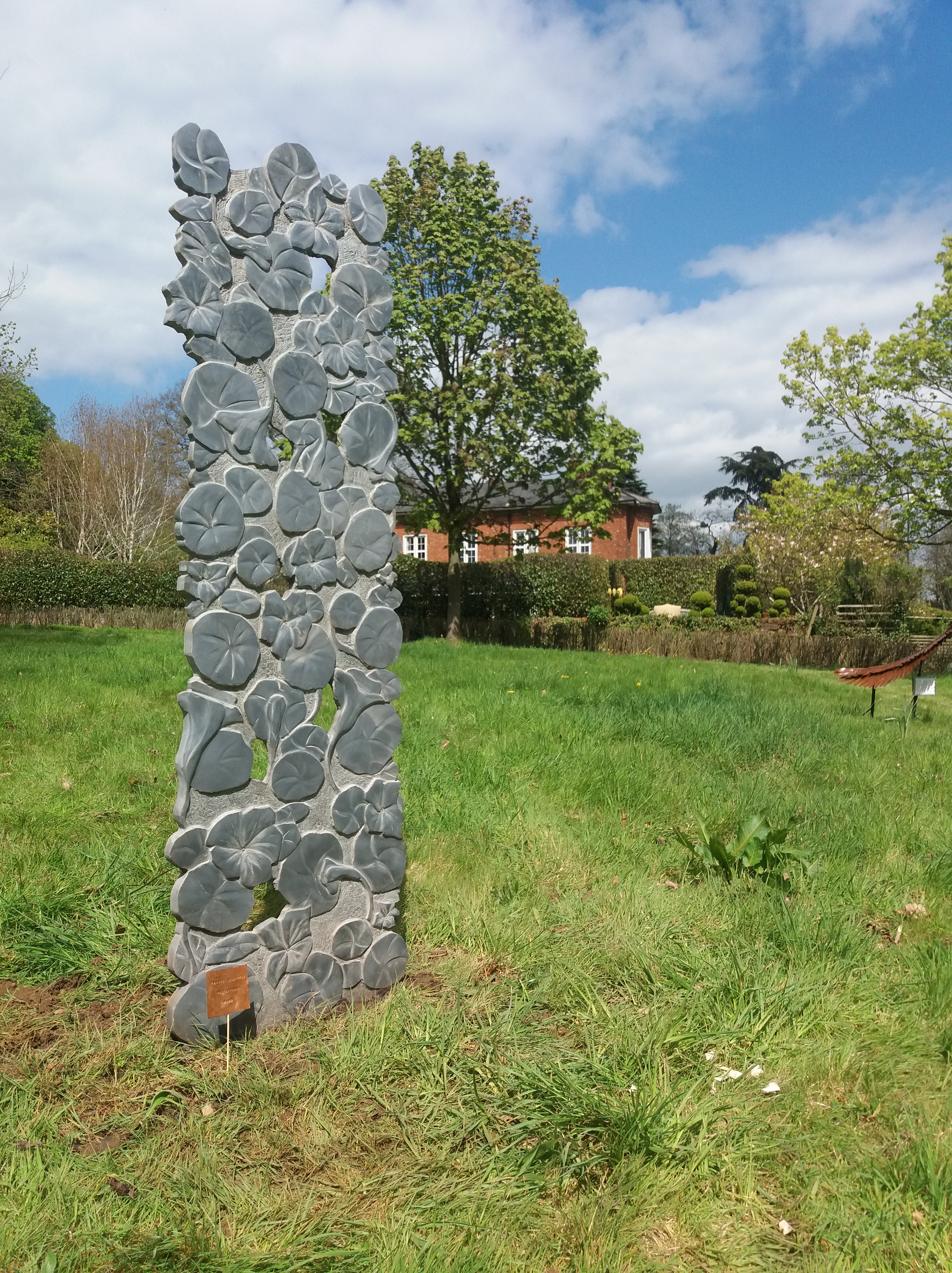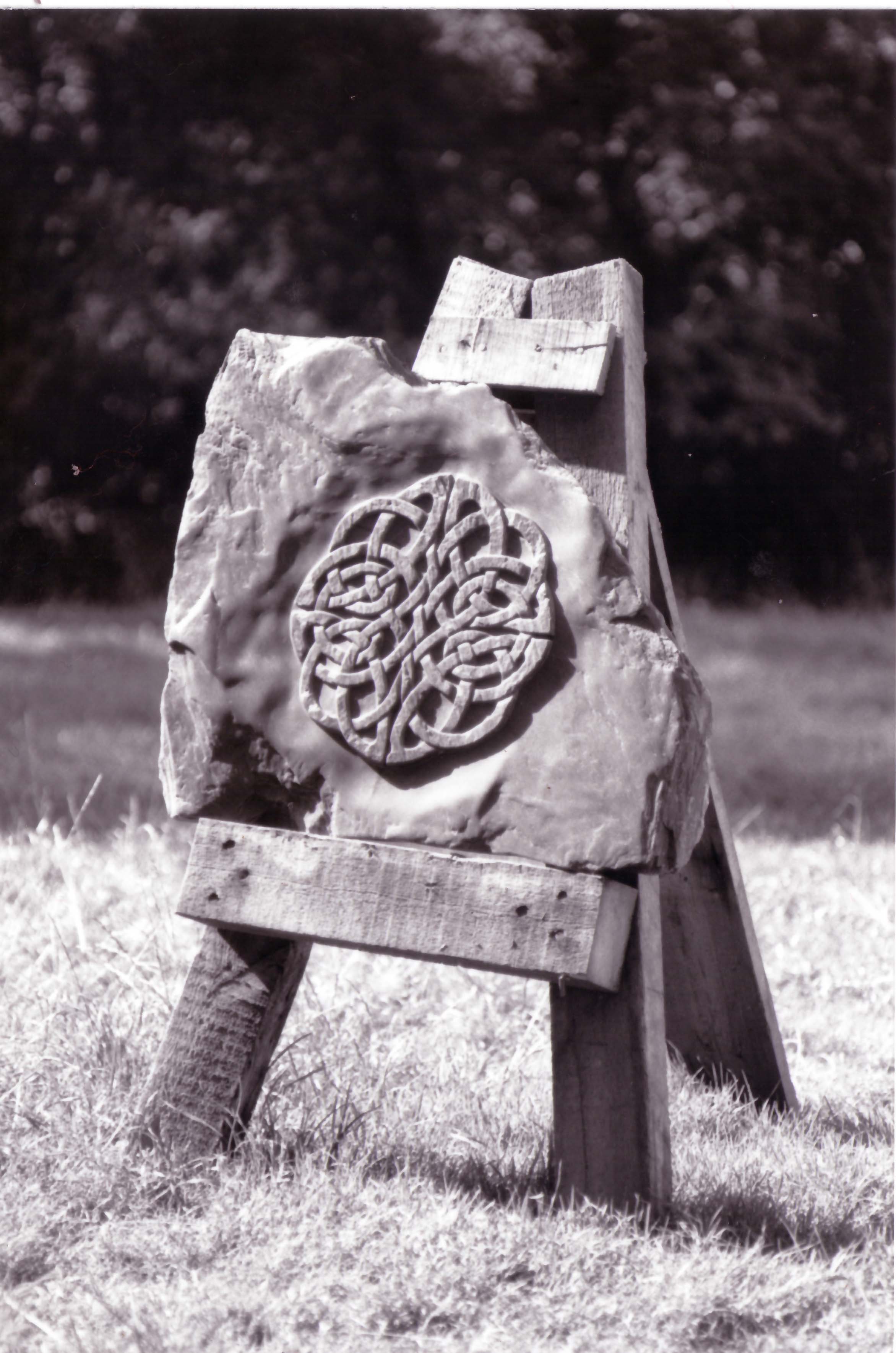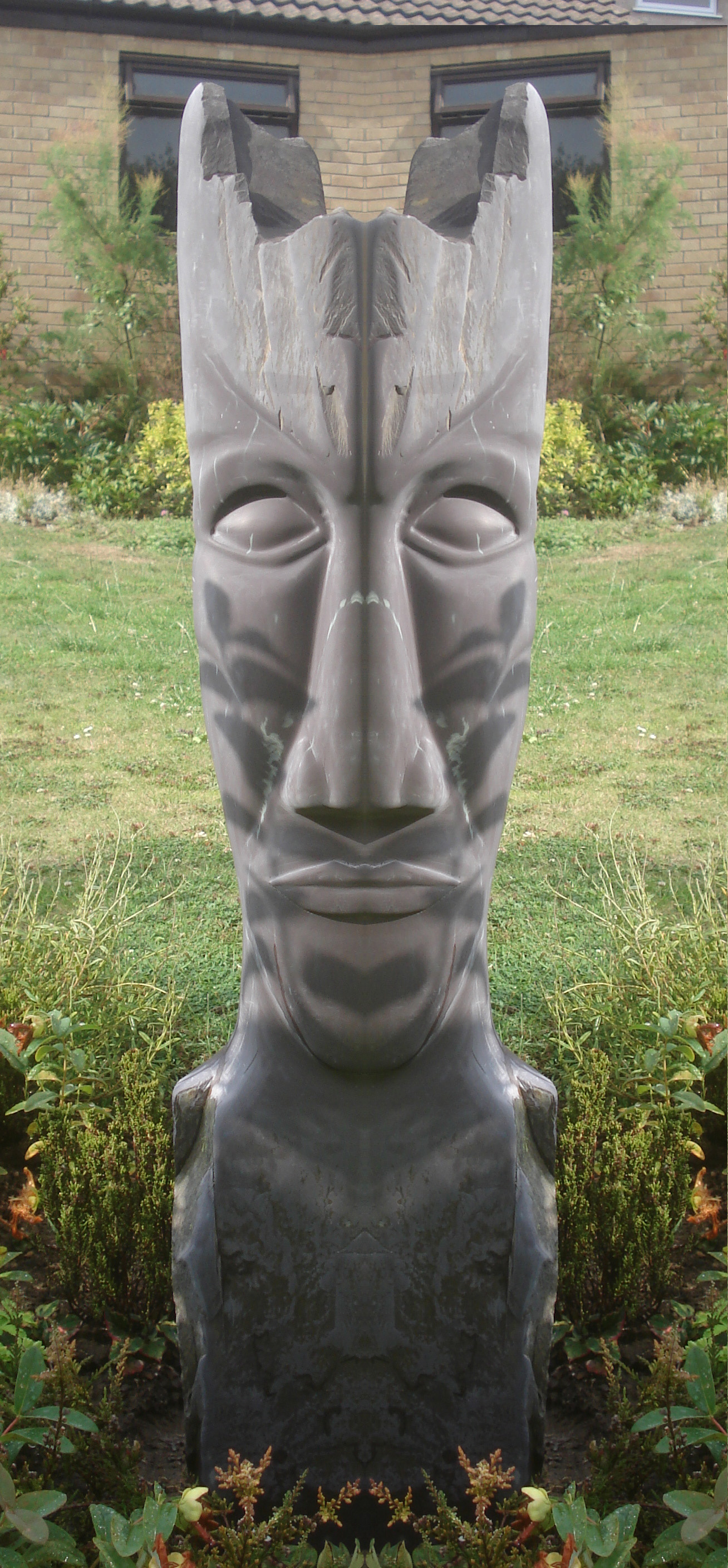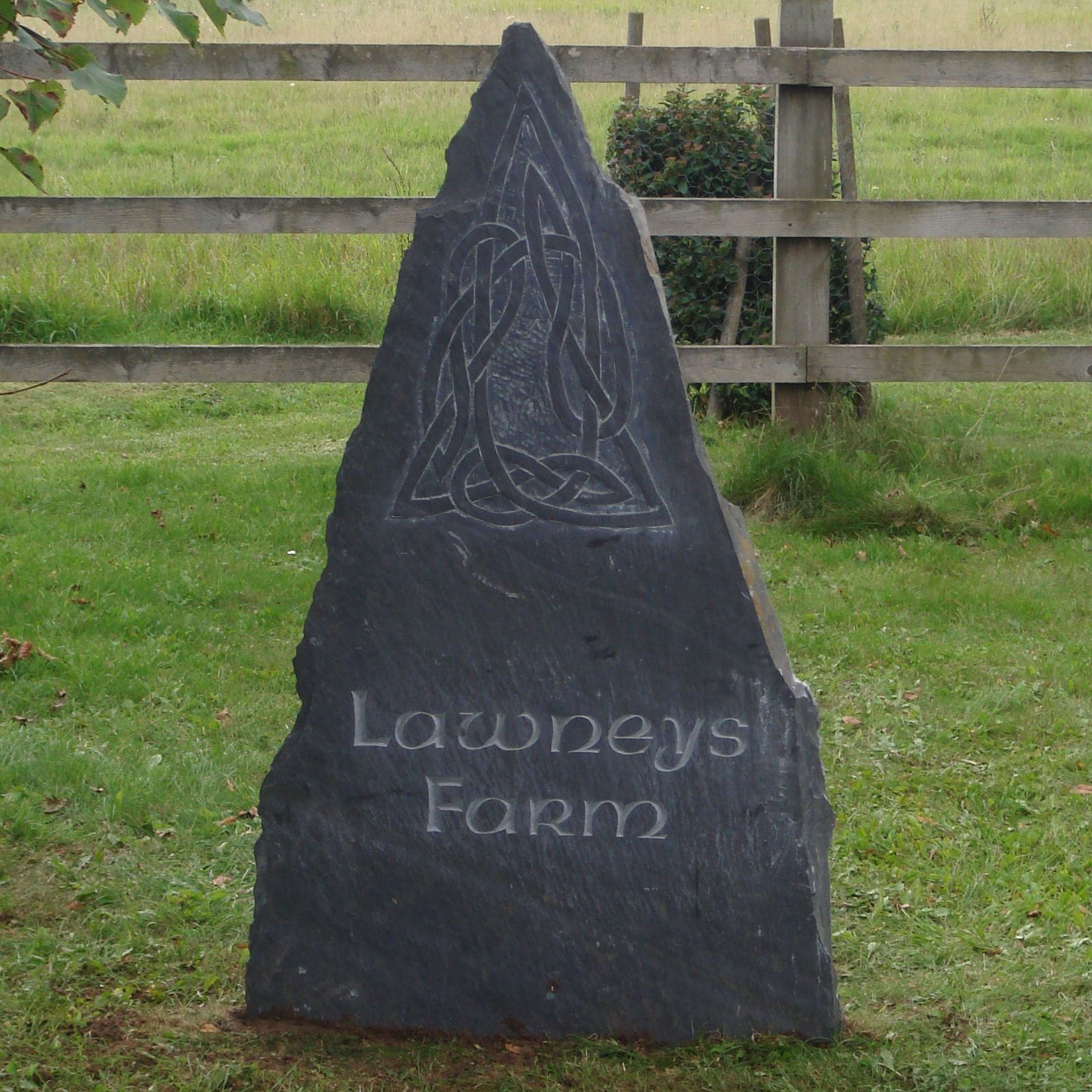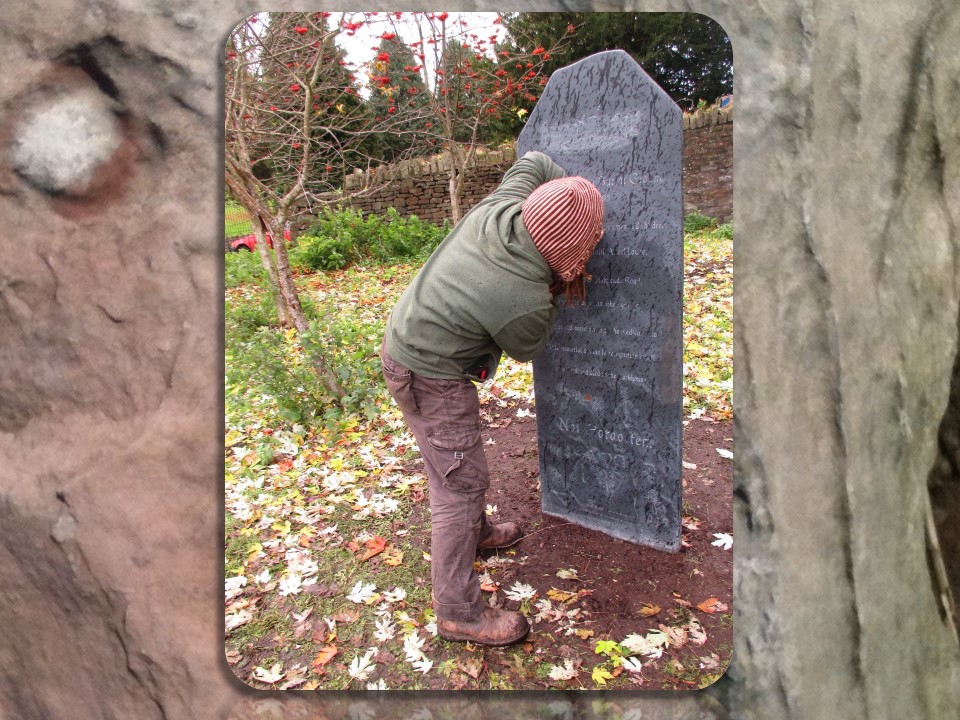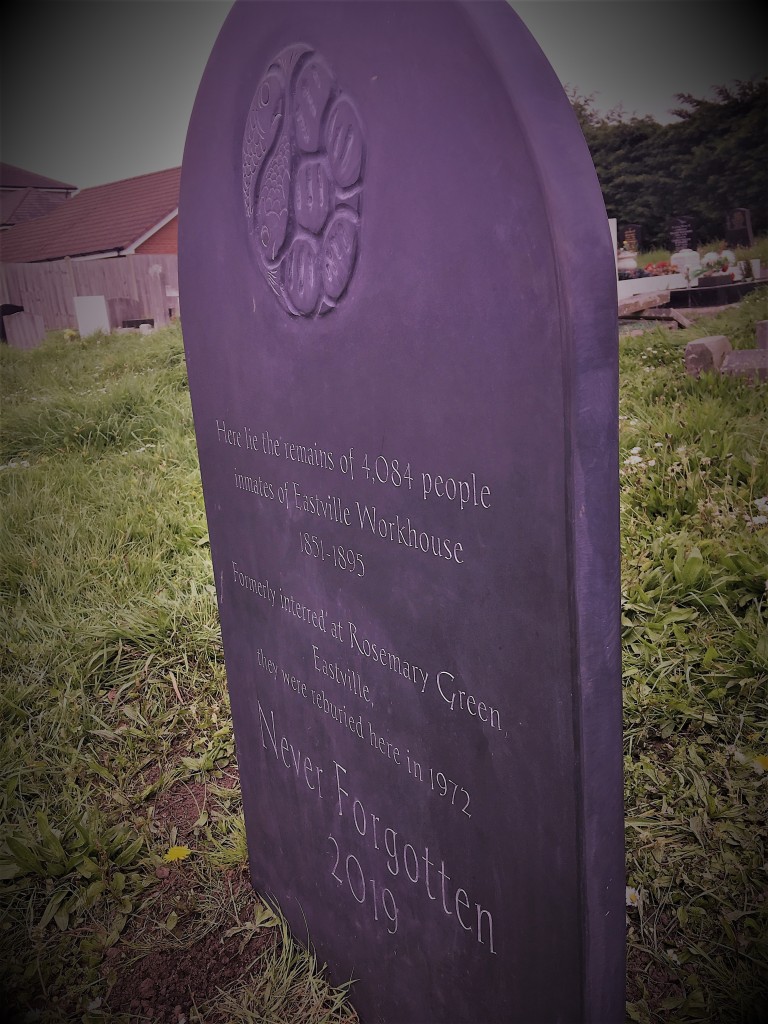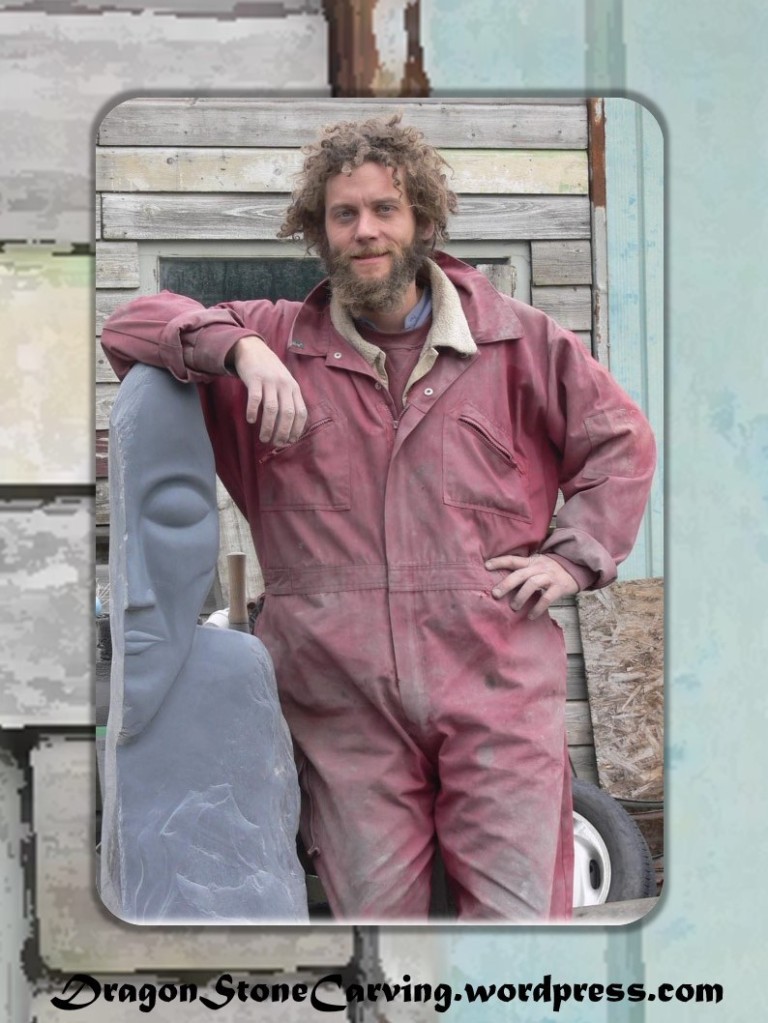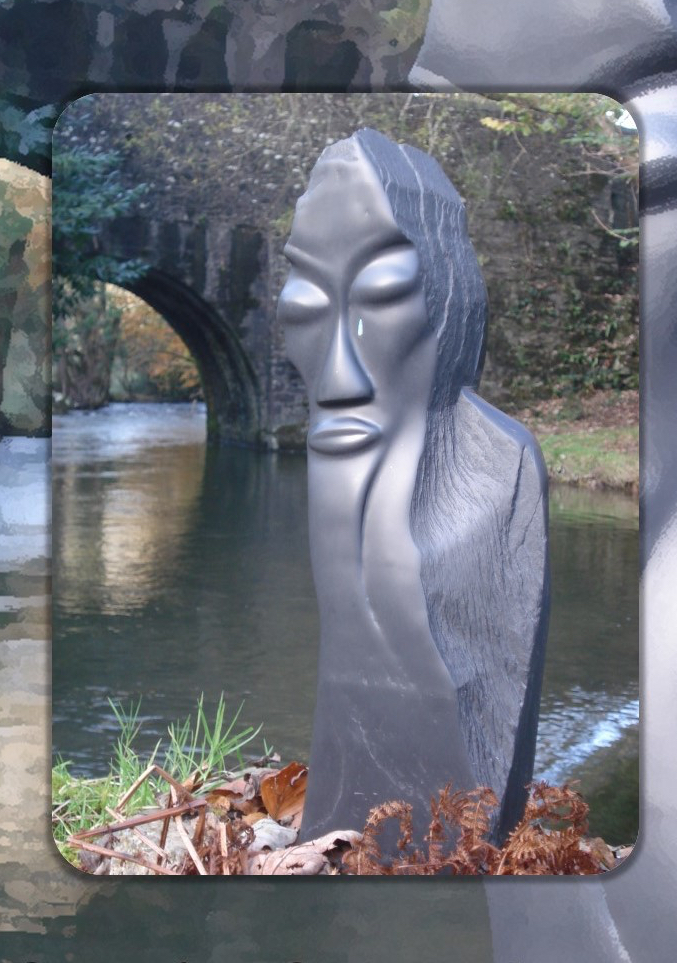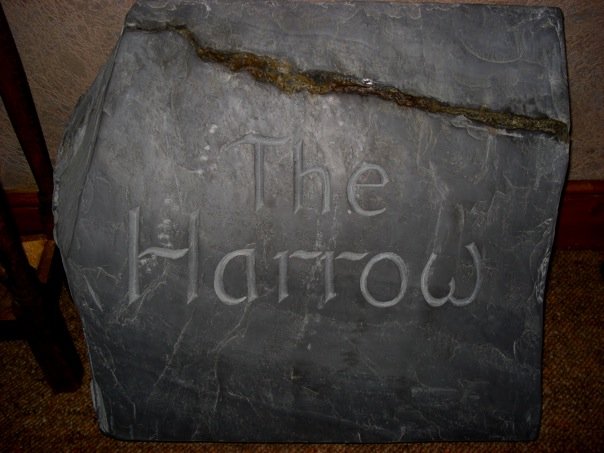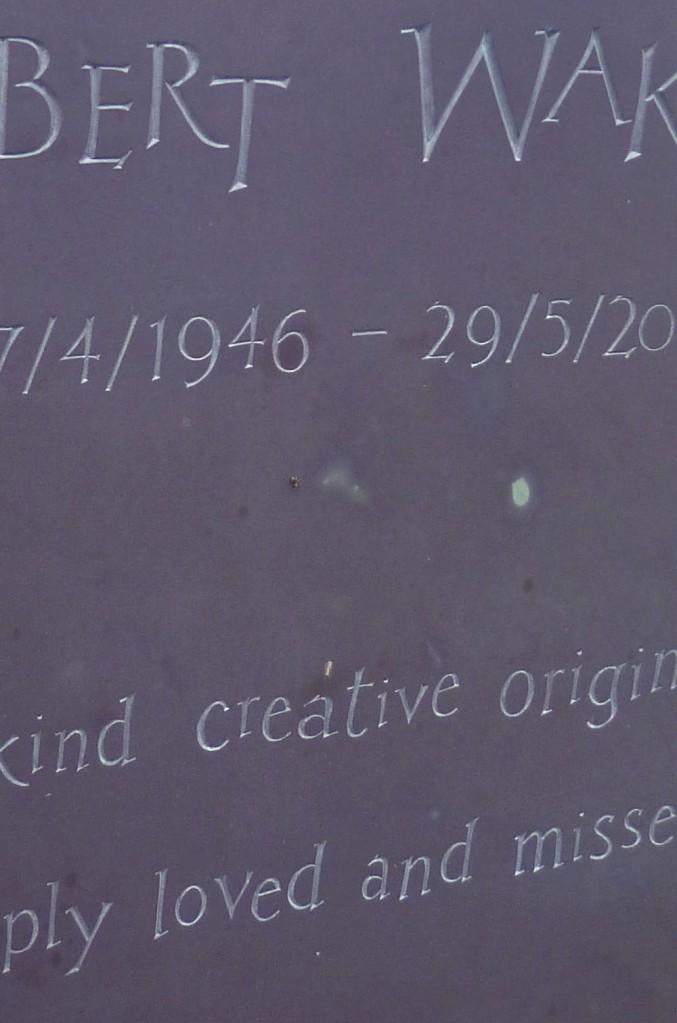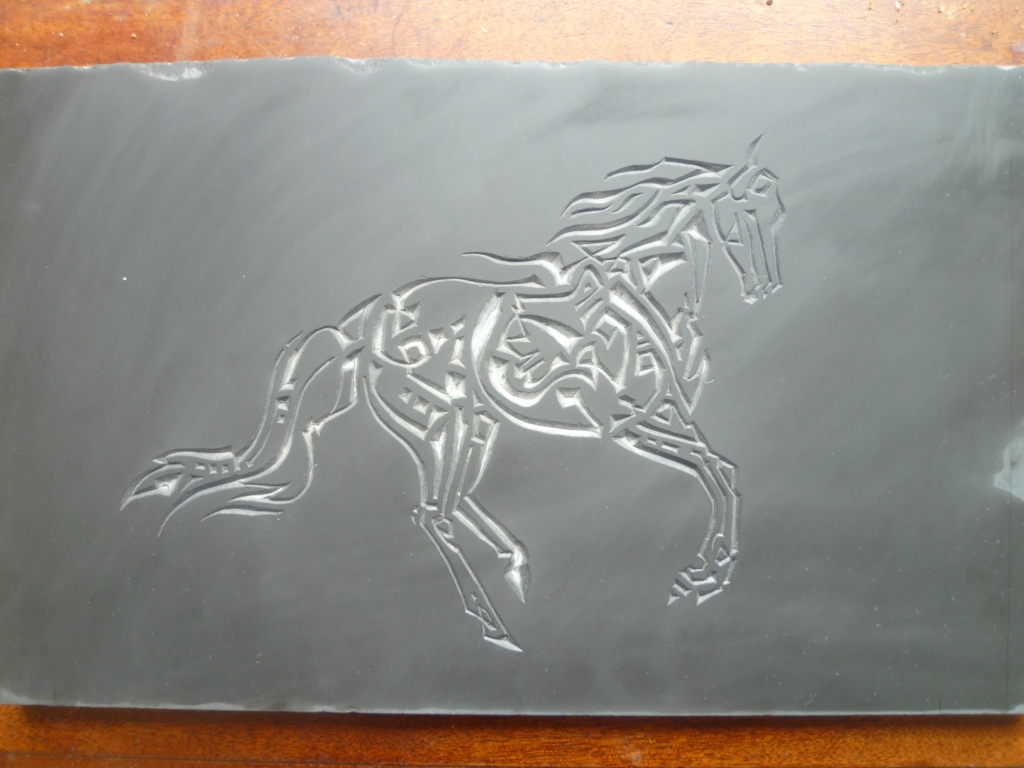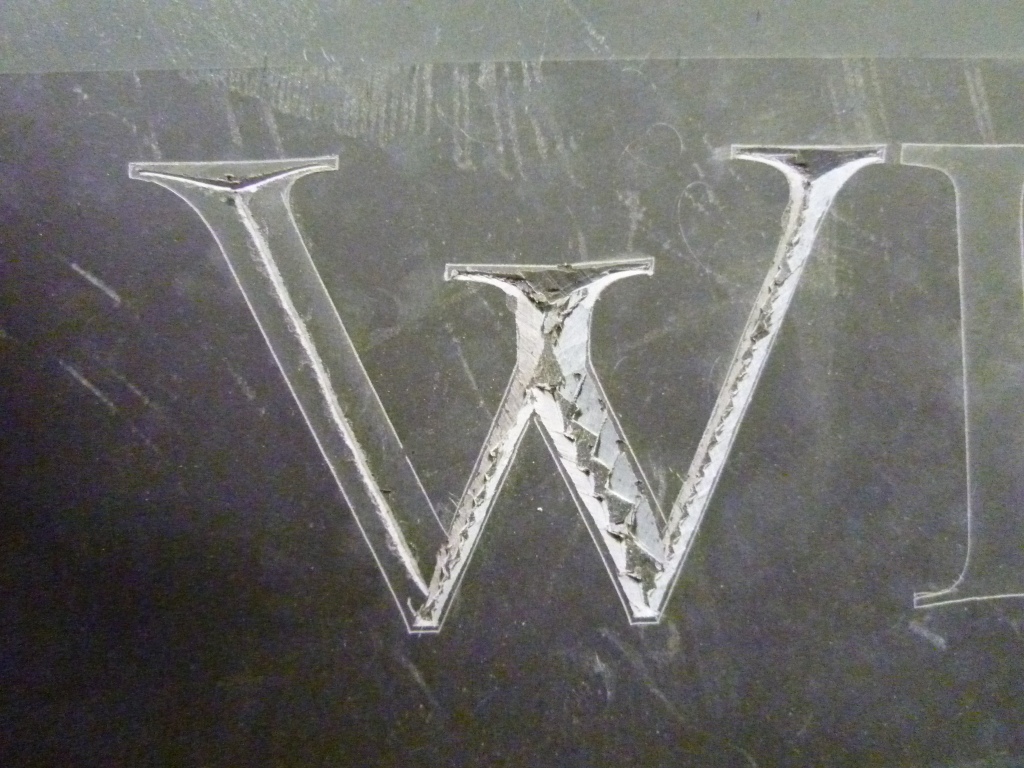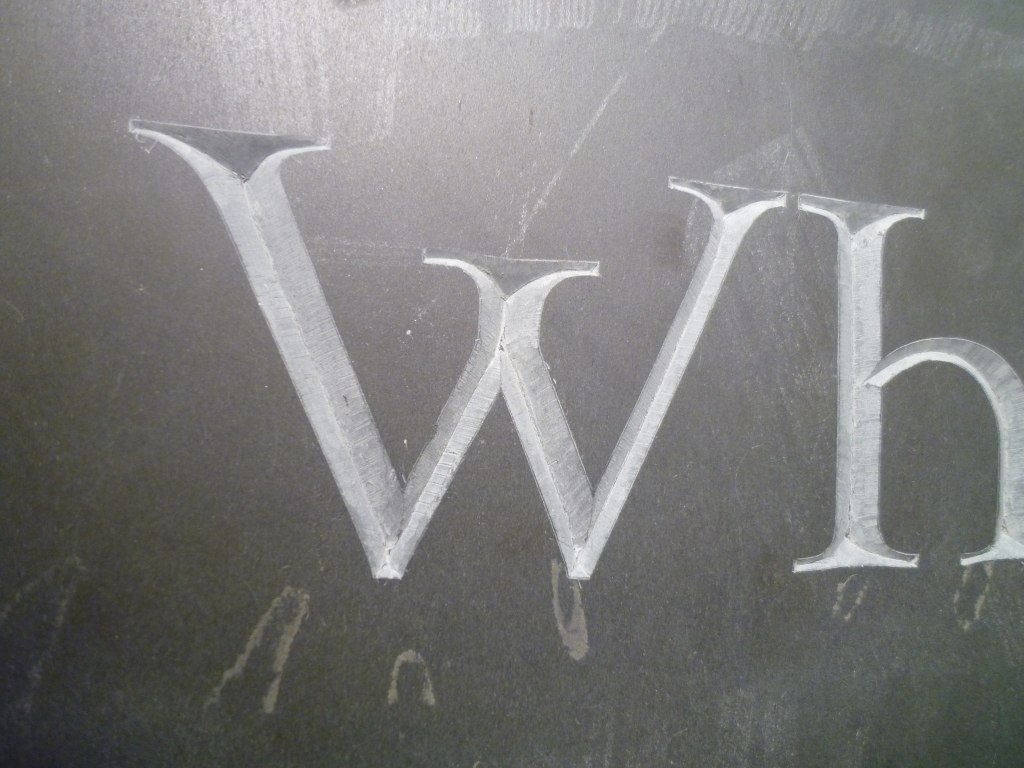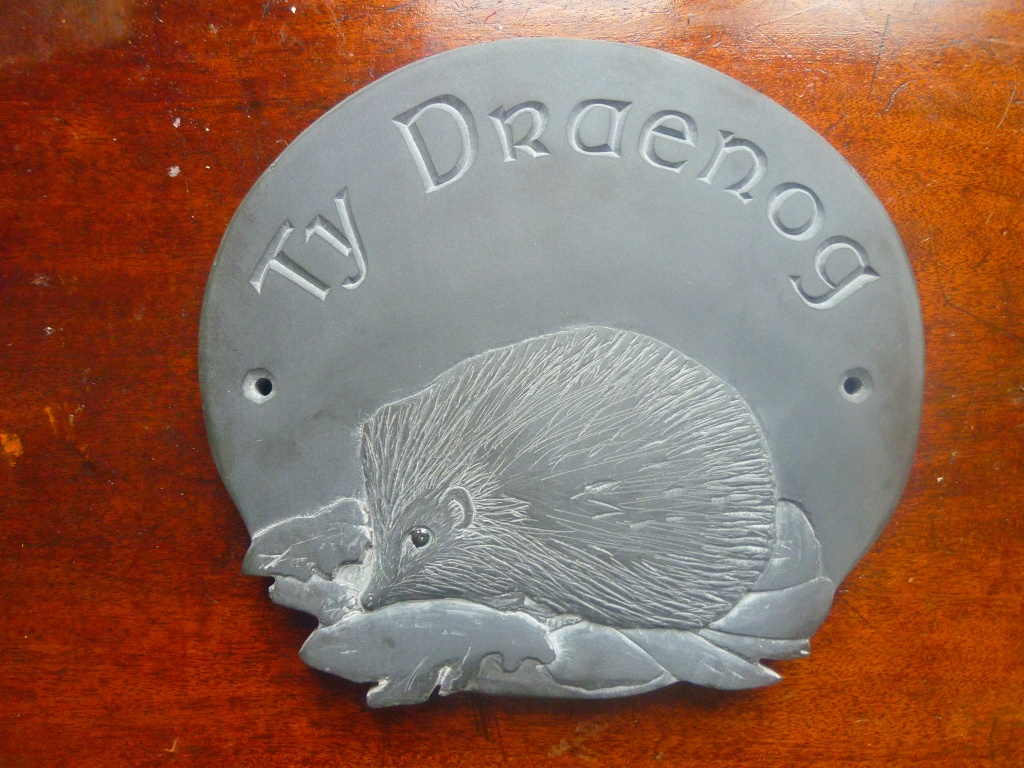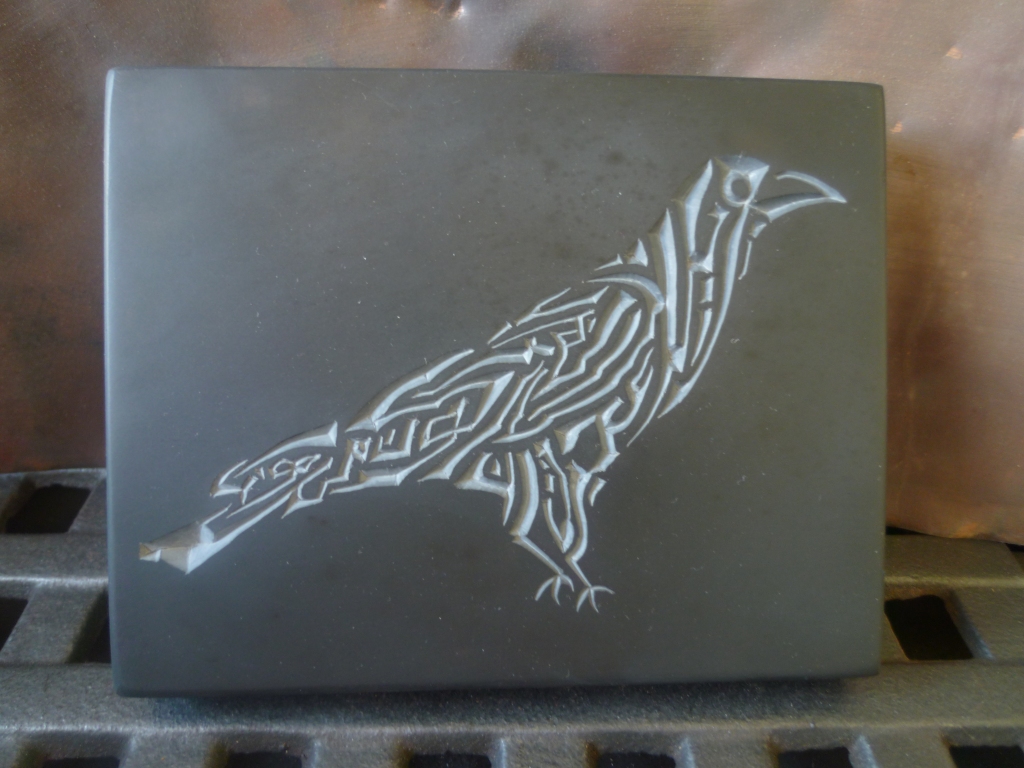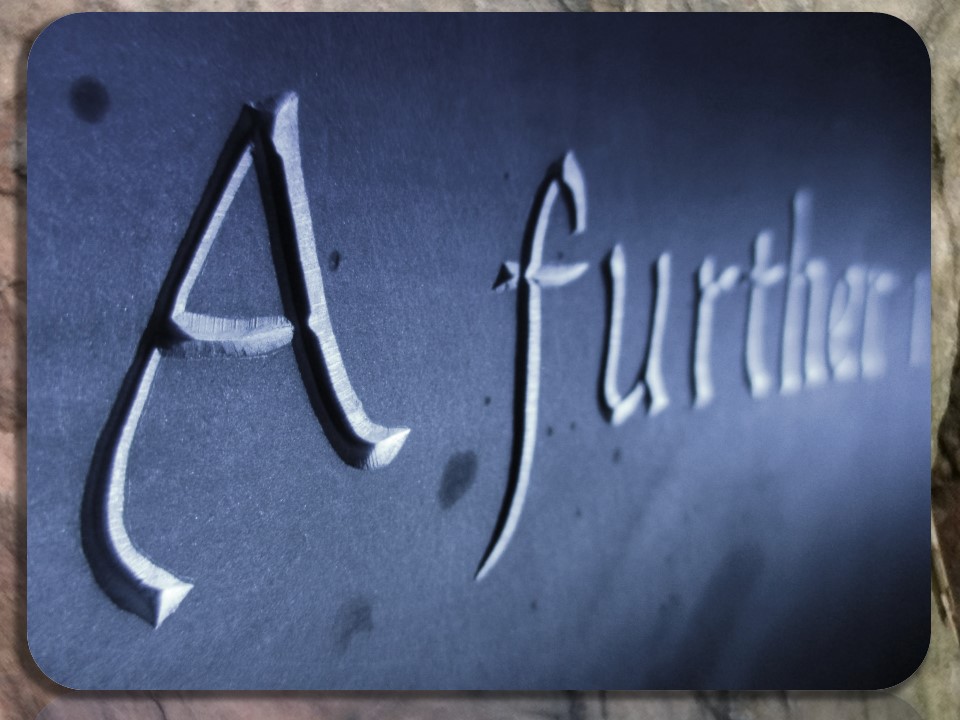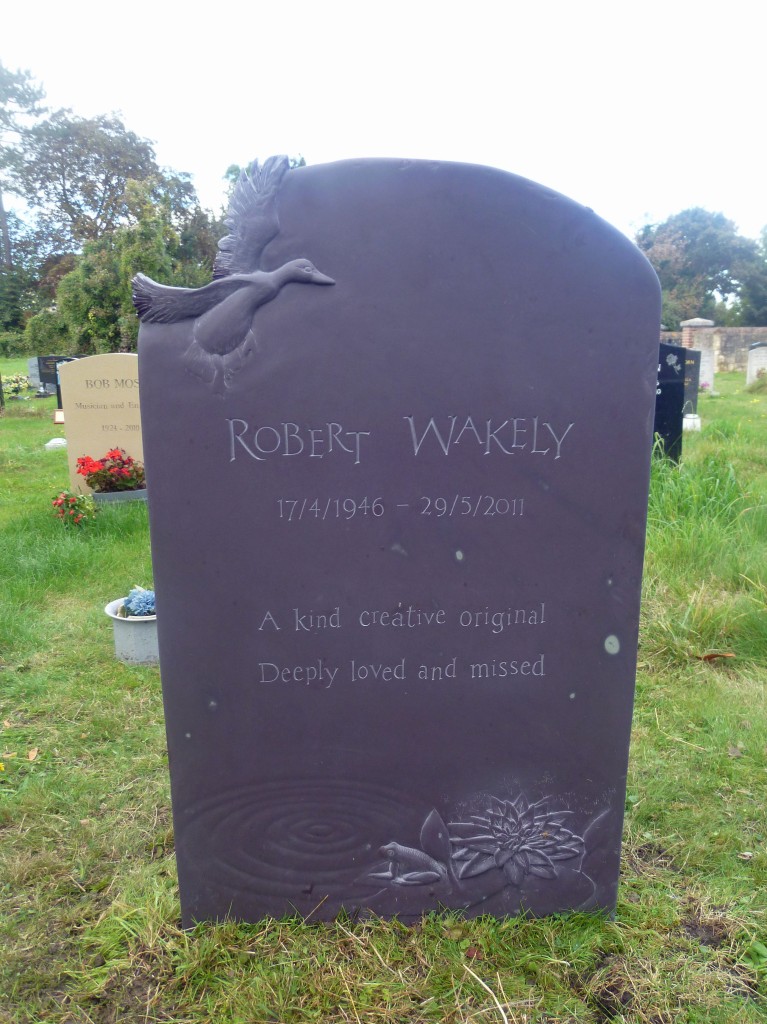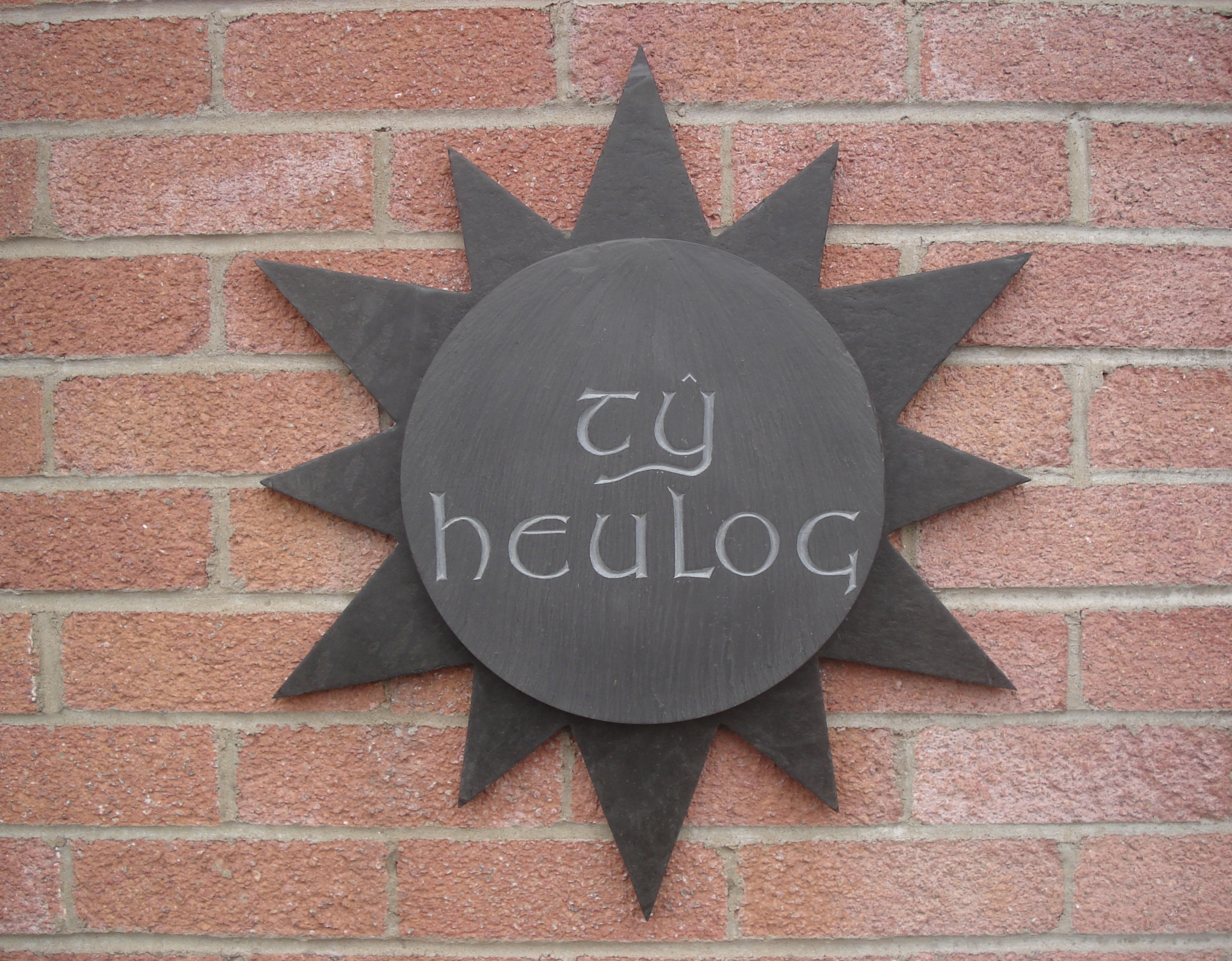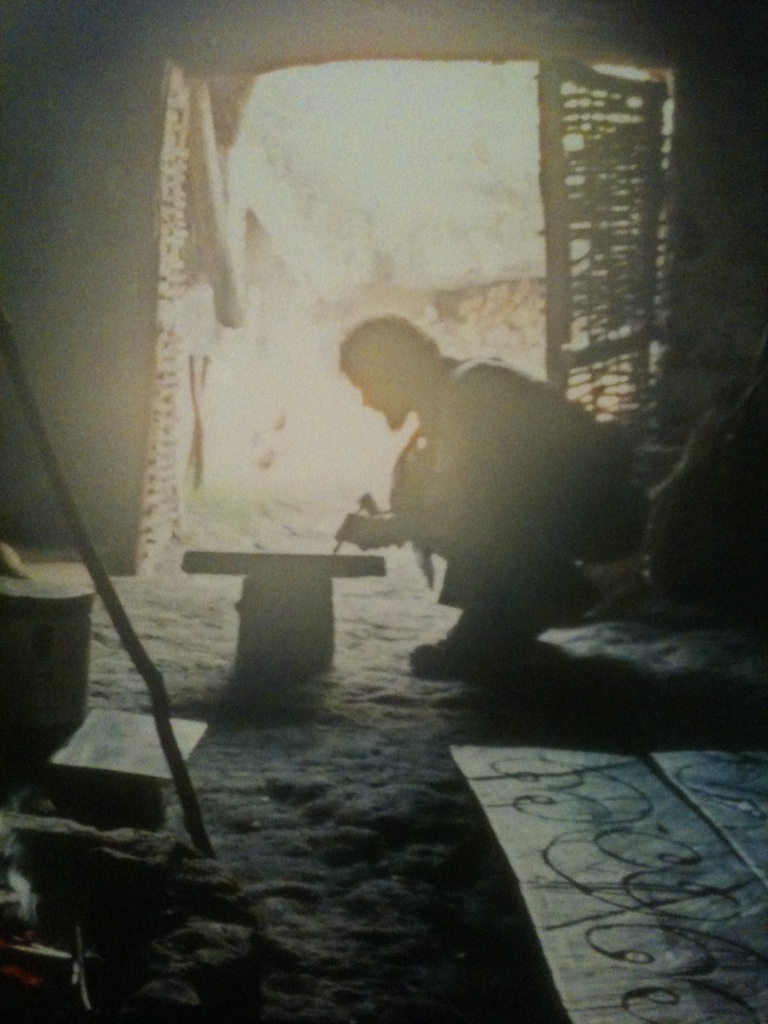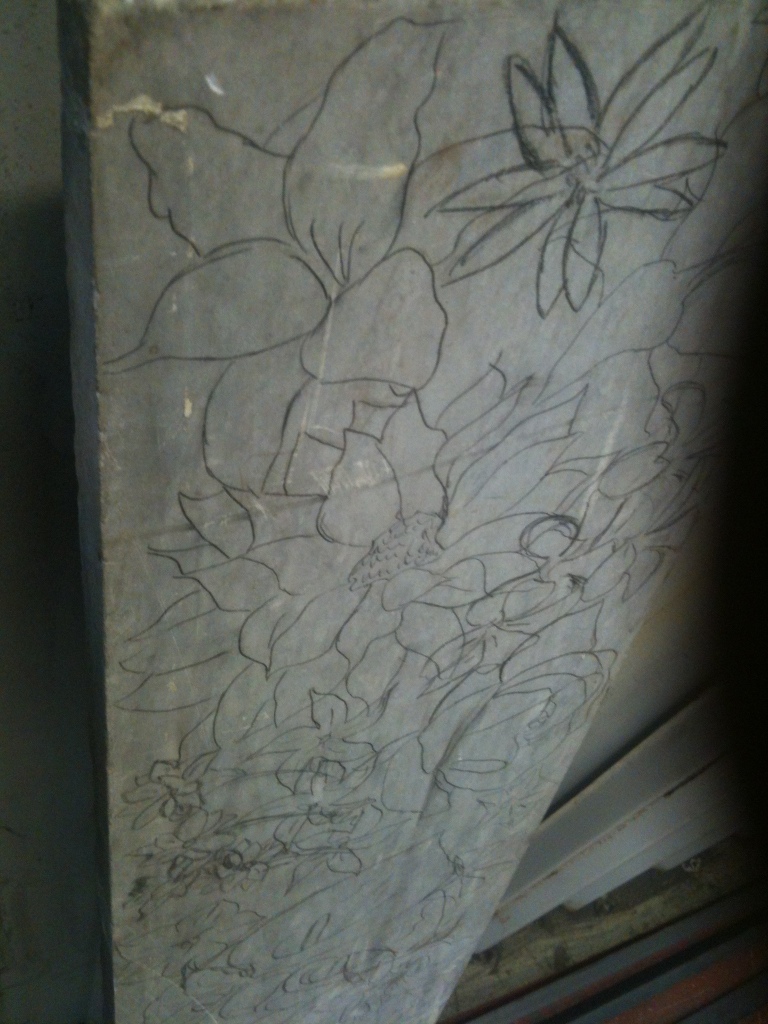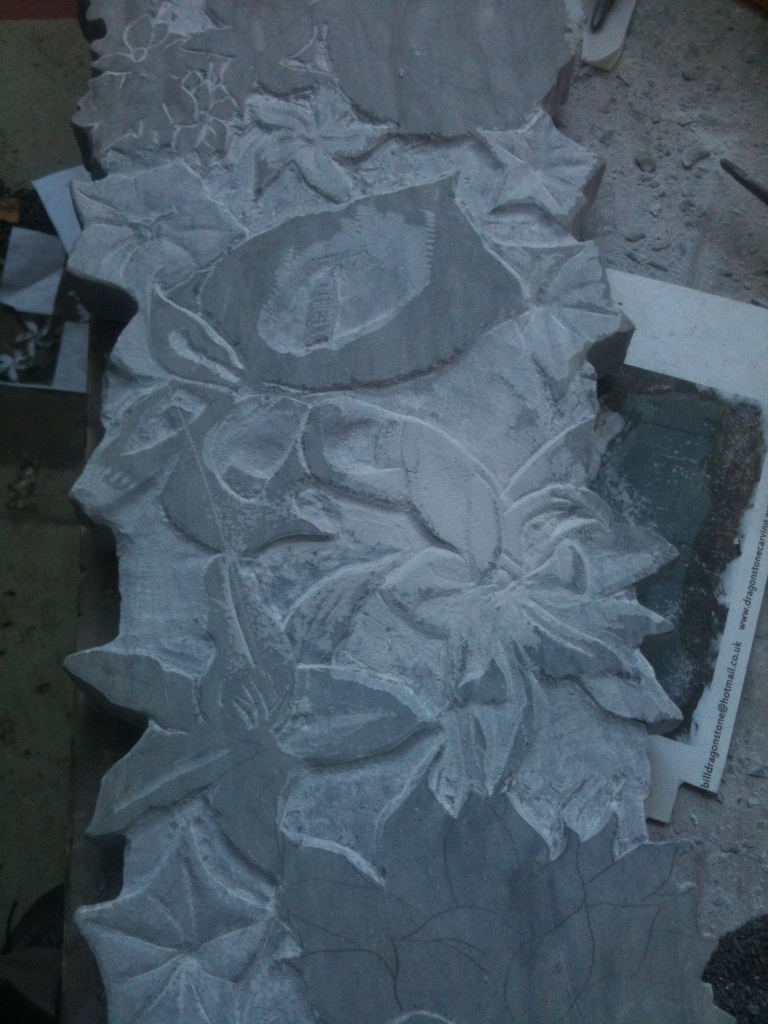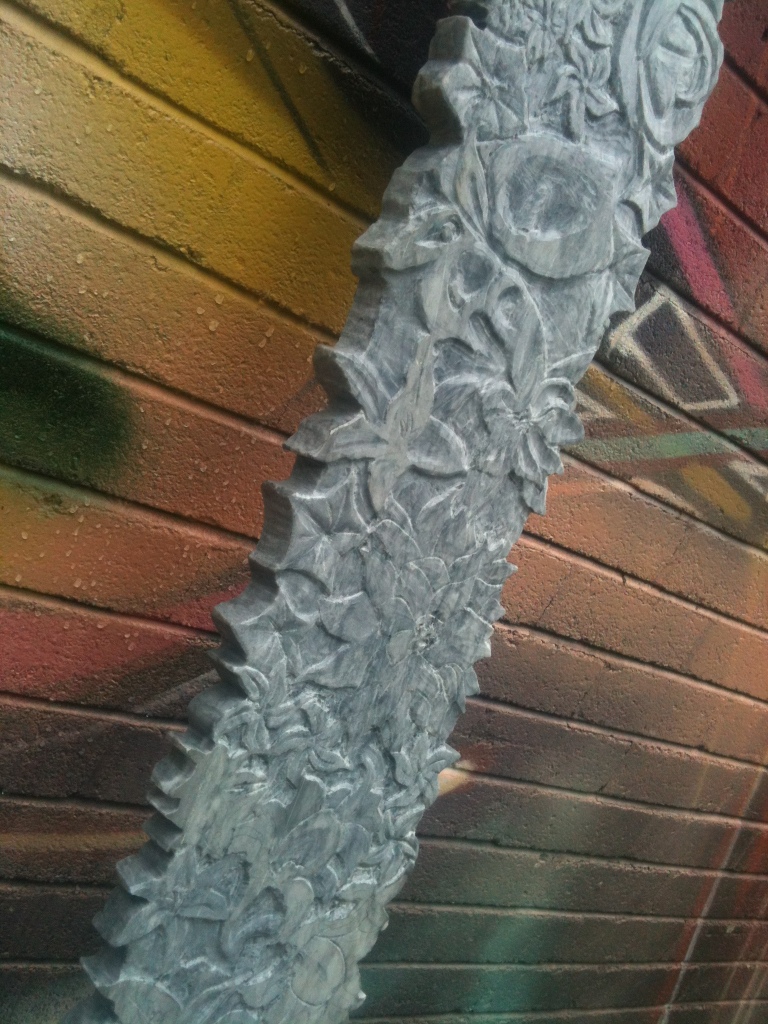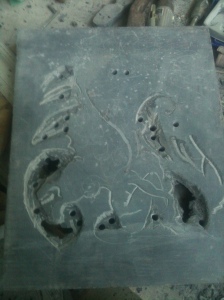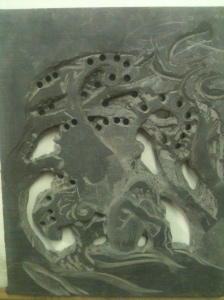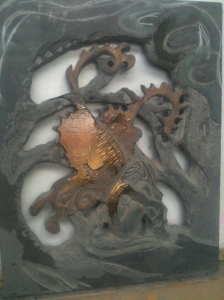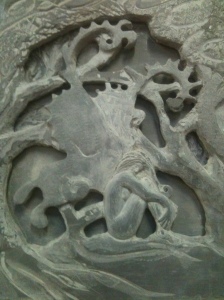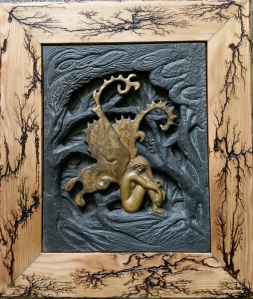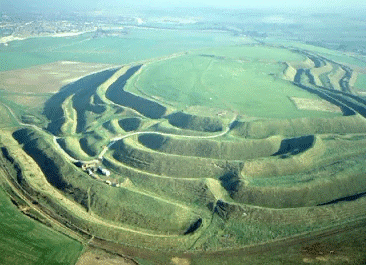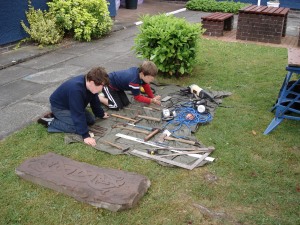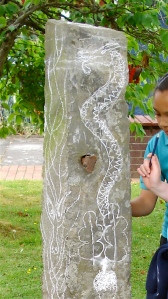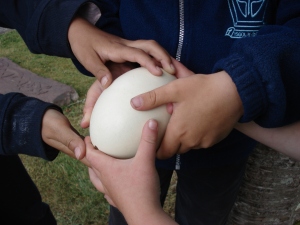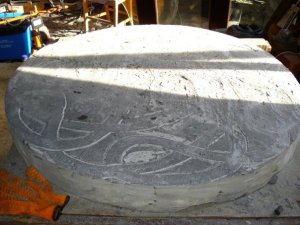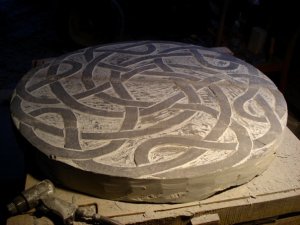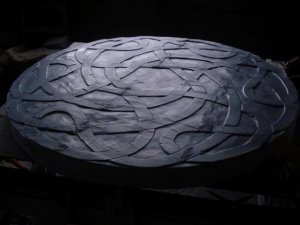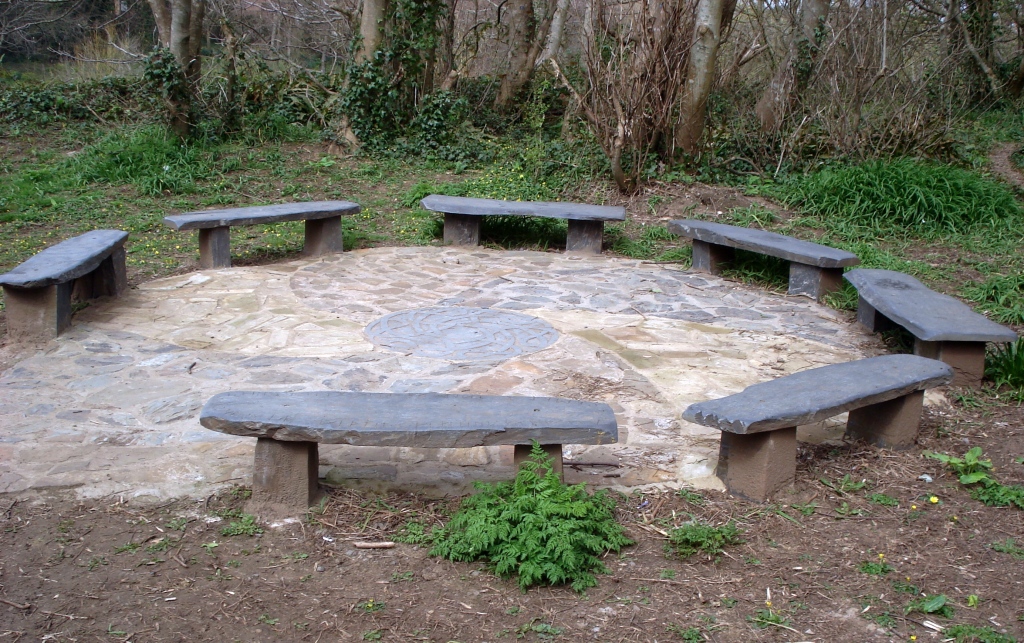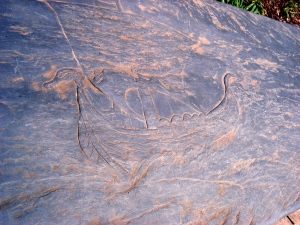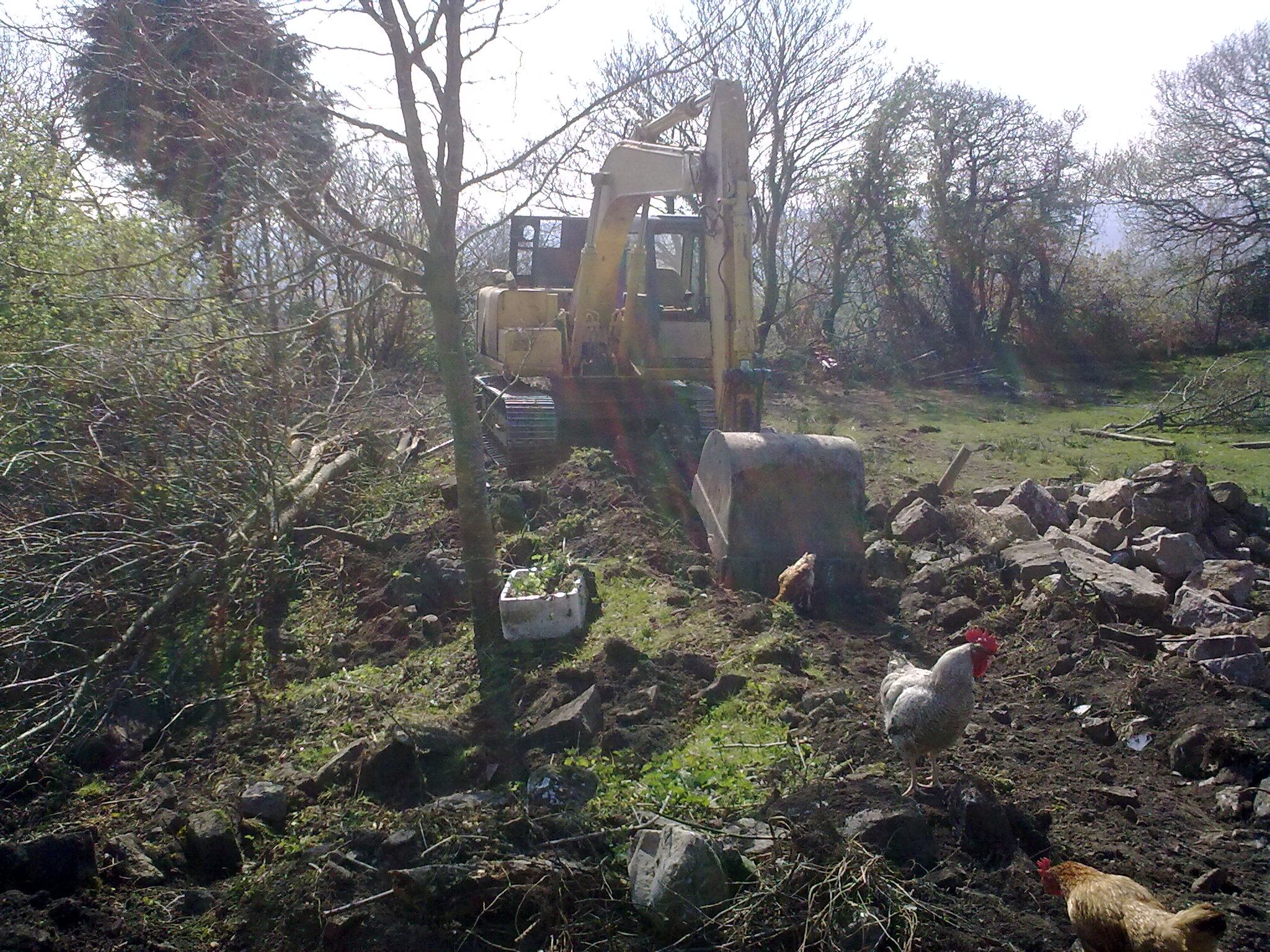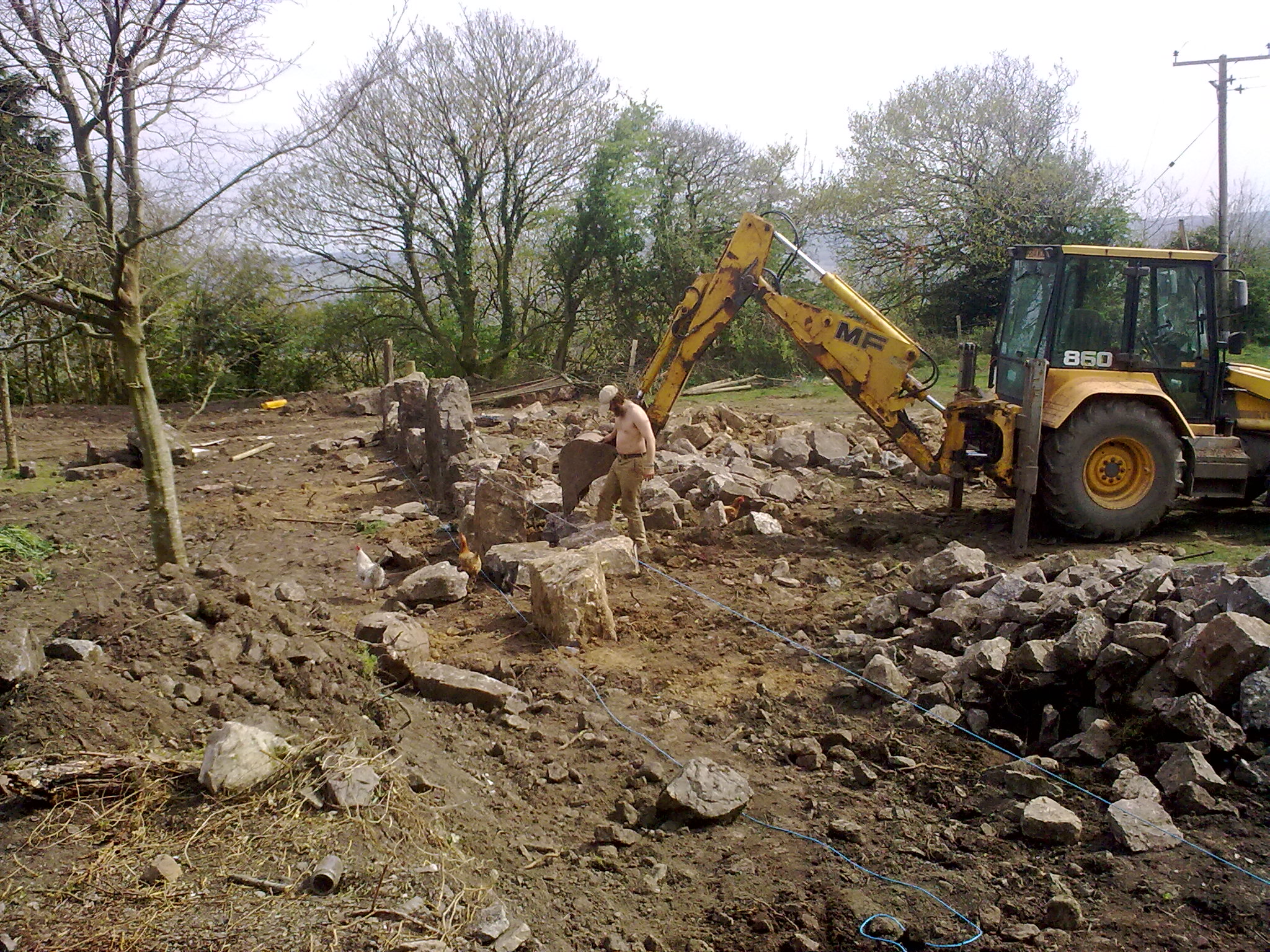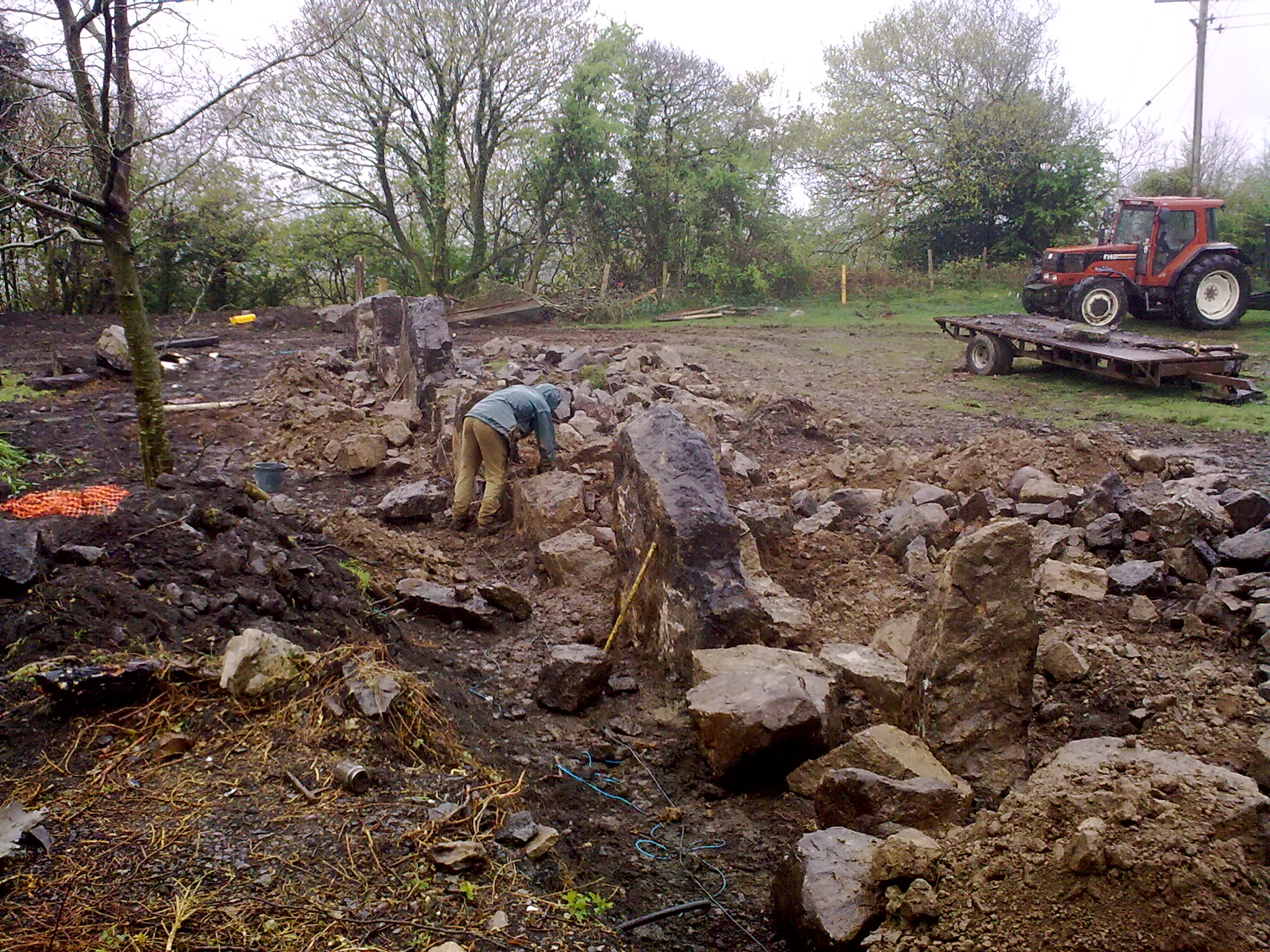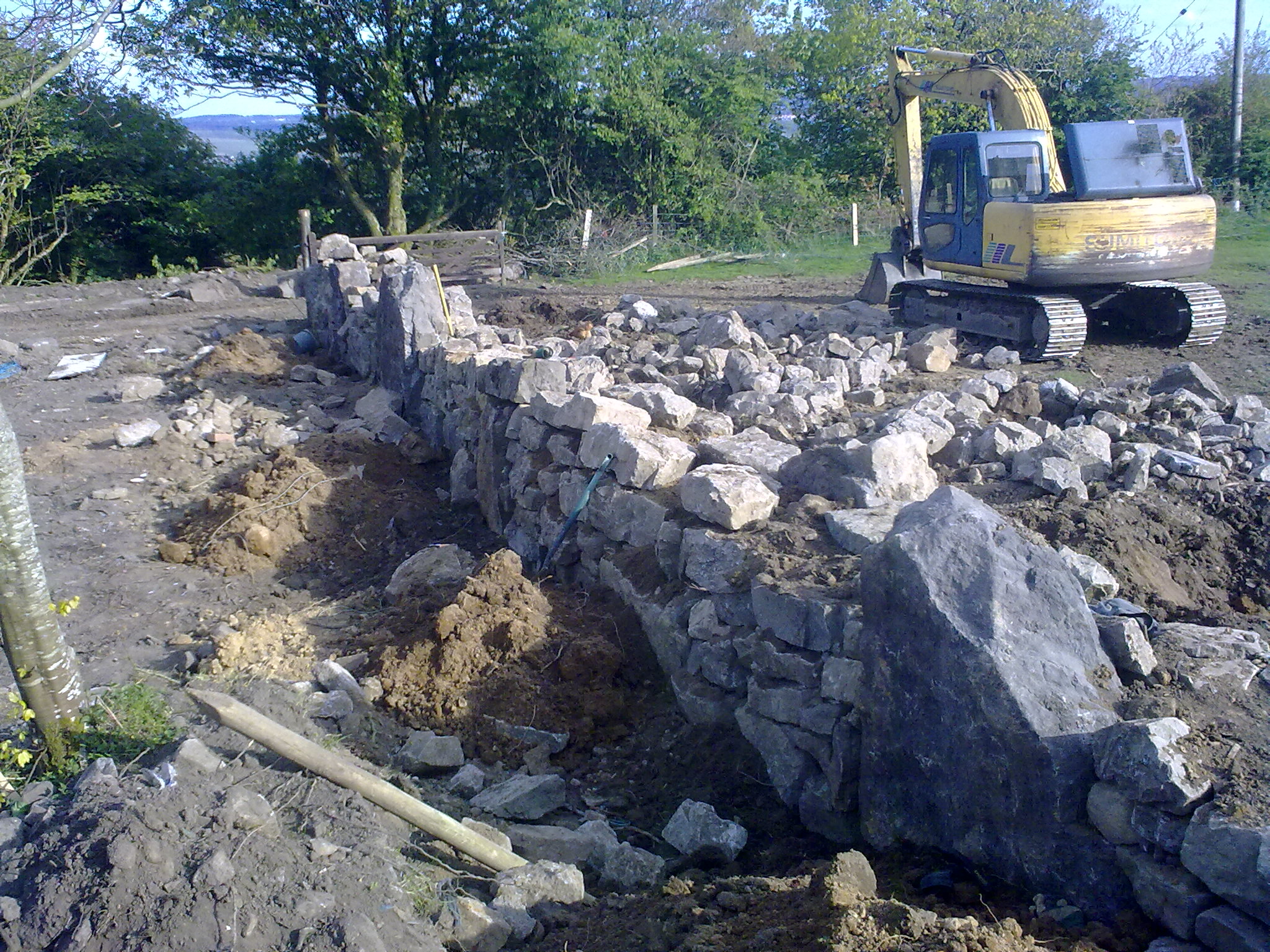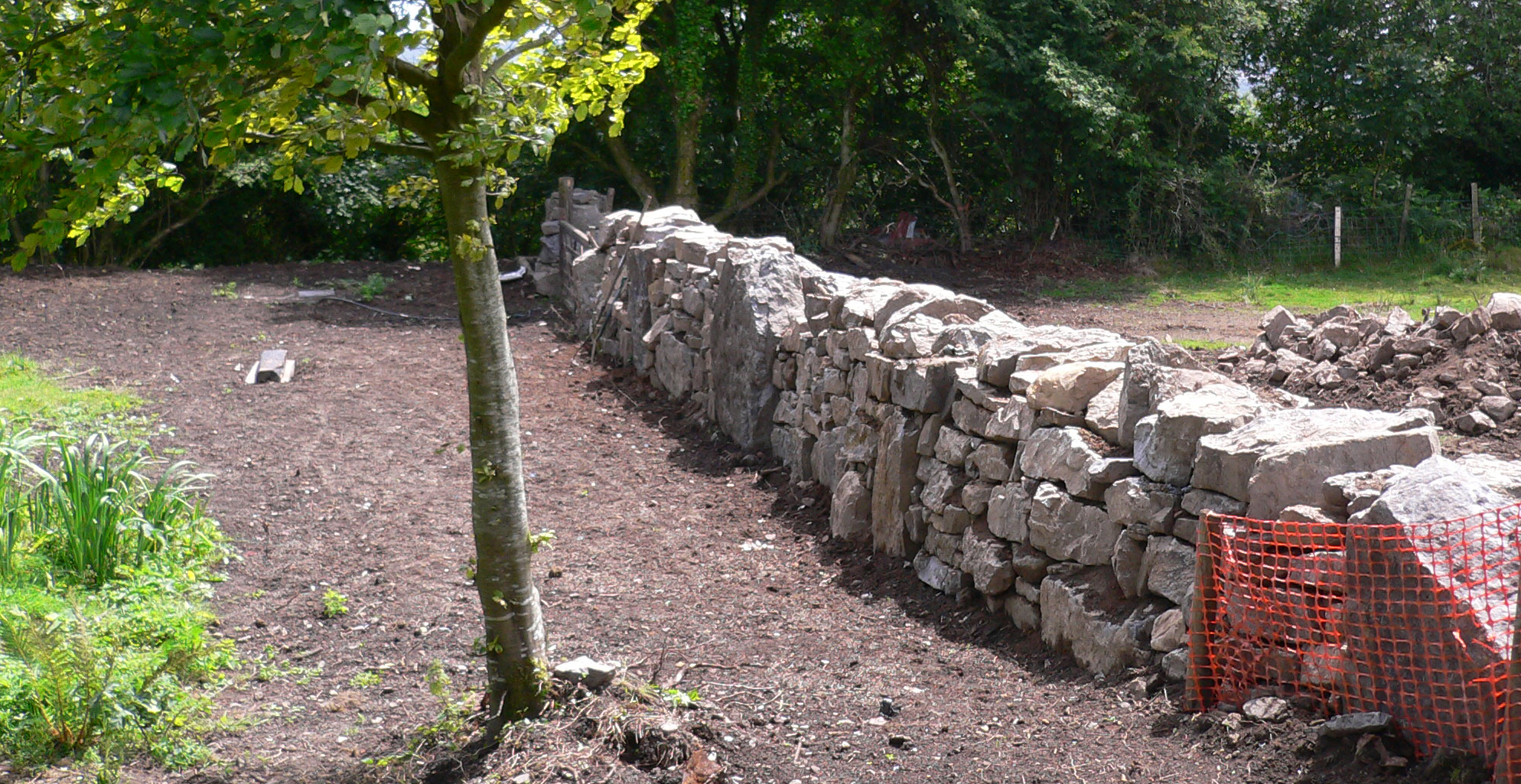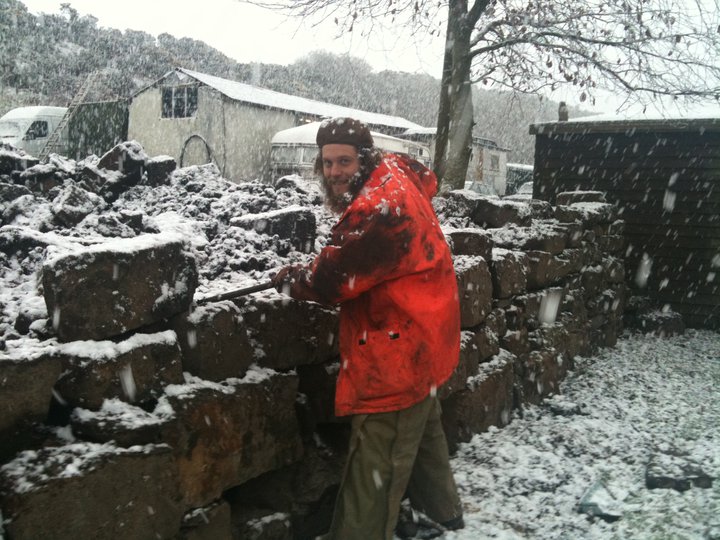This project was my biggest and best to date. The brief was to install three groups of standing stones to draw people through the main entrances of a large lakeside park in Porthcawl, South Wales.
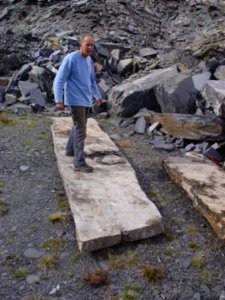
First off was a visit to the quarry to see if they had anything big enough, actually more a case of ‘not too big, not too small’. As it happened the day we went up they were taking apart the base of an old winding shed. The stones were being handled by the biggest of JCB’s. Alan (slate surfer seen above) pointed out that 150 years ago when that structure had been built the stone was all moved by manpower (probably some Welsh Cob – One Horse Power as well) but basically rollers and levers.

The stones were selected and the lorry driven back down to the workshop. Unfortunately the 1960 Manatou Forklift doesn’t always feel like doing anything so myself and Jamie (above) did a bit of ‘levers and rollers’ ourselves sending this lump off the back of the lorry onto a pile of stone. I’m betting the victorian quarrymen would have loved to lay their hands on some sections of scaffold bar!
Along with quarry visits there were several site visits, council meetings and public consultation sessions. Most of the public consultation took the form of school visits, giving a presentation on stone carving, tool handling and big a screen show of my portfolio. This was all for the purpose of inspiring the kids to produce their own designs for the work that was going to go up in their local park. The drawings I took away from those two days translated directly (and unedited) into about 80% of the final content.
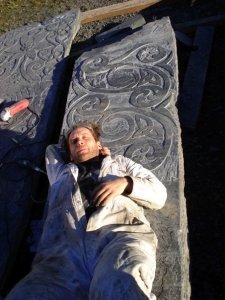
Then it was full steam ahead ‘No rest for the wicked’
Due to scale of the work there was a lot angle-grinding, air-hammer and die-grinder work involved (the die-grinder is a high speed air-powered spinning piece of tungten – great for smoothing and tidying large sections of stone).
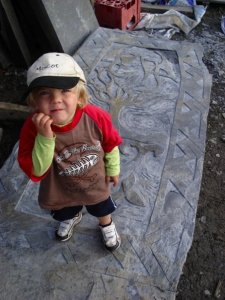
Despite all the power tools I still needed a few little helpers.
Fine detail was still carved by hand and it was very important to me to represent the original drawing as honestly as possible. Avoiding the temptation to ‘improve’ the work.
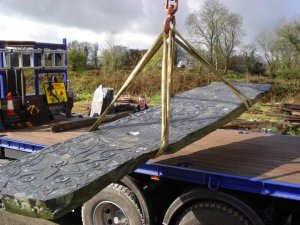
Finally the big day came and for a few brief moments the huge immovable slabs, that had strained the forklift and blocked up the area outside my workshop for months, looked small as they dangled from the Hi-Ab. To our surprise the Hi-Ab operator was able to assure us that they were all less then a tonne.
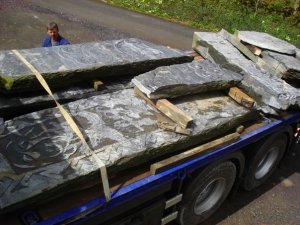
All loaded and secured, I waved goodbye to four months work and wasn’t to see them again until they had become a towering part of the landscape.
Of course I hadn’t seen them standing until I got down their to clean and oil them and was pretty blown away by the experience. The only way to get the top areas done was to climb up the side of the stones using the knotwork borders for finger and toe holds.
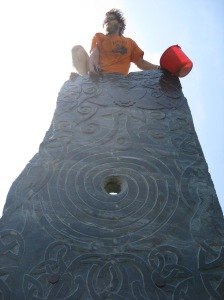
Twelve months on the birds and the dogs had left their ‘marks’ but that was about it.
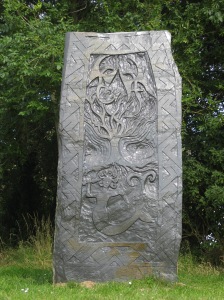
The whole project was about regenerating the park which had deteriorated with graffiti, arson and vandalism running in an escalating cycle. The more this happened, the less families and dog walkers came into the park and the worse it got.
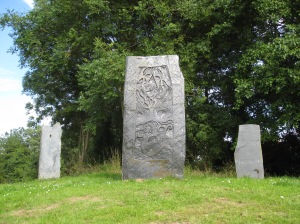
On the last visit I made I found only two pieces of graffiti, one placed carefully and centrally in a panel I’d left blank (was decorative) the other was on the back and read “BOSS” which I took as a complement.

I put this down to the fact that many of the regular vandals would have had younger brothers and sisters involved in the project and some whose work was now permanently engraved on these 12 foot monoliths.
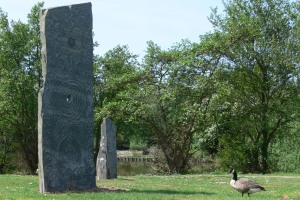
The work is above all accessible and (dare I say it) aesthetically pleasing, something which often seems to have been deemed unnecessary in public art these days. People are rightly upset by huge sums of money being spent on public art that is ‘bold and and challenging’ because it is actually ‘ugly and an eyesore’.

Footfall is now up, the public are venturing deeper into the park again and as a result vandalism etc is down. I met a mother with her two year old daughter who was pleased that she could now get her walk around the entire park, rather than visiting just the swings and slide on the far edge, because she wanted to see the dragons and mermaids. Art really can be good for your health.
Result!

